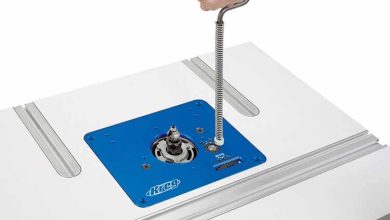How to Prepare for a Hamilton Flooring Installation

Installing new flooring can transform the look and feel of any room in your home. However, proper preparation is crucial to ensure a smooth installation process and a long-lasting result. In this guide, we’ll walk you through everything you need to know to prepare for a flooring installation, from choosing the right materials to post-installation care.
Identifying Suitable Flooring Types
Different areas of your home may require different types of flooring:
- Living Room and Bedrooms: Hardwood, laminate, or carpet are popular choices due to their comfort and aesthetic appeal.
- Kitchen and Bathrooms: These rooms need water-resistant options like tile, vinyl, or engineered wood.
- Basements: Consider moisture-resistant materials like vinyl, tile, or concrete finishes.
Measuring Your Space
Accurate measurements are key to purchasing the right amount of flooring. Here’s how to measure:
- Measure the Length and Width: Use a tape measure to determine the length and width of the room in feet.
- Calculate the Area: Multiply the length by the width to get the total square footage. For irregularly shaped rooms, divide the space into smaller sections, calculate each area, and then add them together.
- Add Extra Material: Add 10% to your total for waste and future repairs.
Preparing the Subfloor
A well-prepared subfloor ensures the longevity and performance of your new flooring:
- Remove Existing Flooring: Carefully remove old flooring materials and dispose of them properly.
- Level the Subfloor: Check for any uneven areas and use a leveling compound to create a smooth surface.
- Address Moisture Issues: Ensure the subfloor is dry. If necessary, use a moisture barrier to prevent damage to your new flooring.
Acclimating the New Flooring Material
Different flooring materials need time to acclimate to the room’s environment to prevent issues like expansion or contraction:
- Hardwood and Laminate: Leave the planks in the room where they will be installed for 48-72 hours.
- Vinyl and Carpet: Generally, these materials require less time but still benefit from being left in the room for at least 24 hours.
Tools and Materials Required
Before you begin the installation, gather all necessary tools and materials:
- Tools: Tape measure, utility knife, saw (for cutting planks), hammer, nails, spacers, adhesive, trowel, level, and safety gear.
- Materials: Flooring material, underlayment (if needed), transition strips, baseboards, and adhesive or nails.
Step-by-Step Guide to Installing Flooring
Follow these steps for a professional finish:
- Lay the Underlayment (if needed): Roll out the underlayment across the subfloor.
- Plan Your Layout: Start from one corner of the room, usually the farthest from the door.
- Install the First Row: Place spacers between the planks and the wall to allow for expansion. Lay the first row along the longest wall.
- Continue Laying Planks: Stagger the seams and cut planks as needed to fit. Use a tapping block to ensure a snug fit.
- Finish with Trim and Transitions: Install baseboards and transition strips to cover expansion gaps.
Post-Installation Care and Maintenance
To keep your new flooring looking great:
- Clean Regularly: Sweep and mop (use manufacturer-recommended cleaning products).
- Protect from Damage: Use furniture pads and avoid dragging heavy furniture.
- Control Indoor Climate: Maintain consistent indoor humidity levels to prevent warping.
Proper preparation is the key to a successful flooring installation. By following these steps, you can ensure a smooth process and enjoy beautiful, durable flooring for years to come. Ready to get started? Contact Dobi Design Co today for all of your Hamilton flooring needs. Happy renovating!





